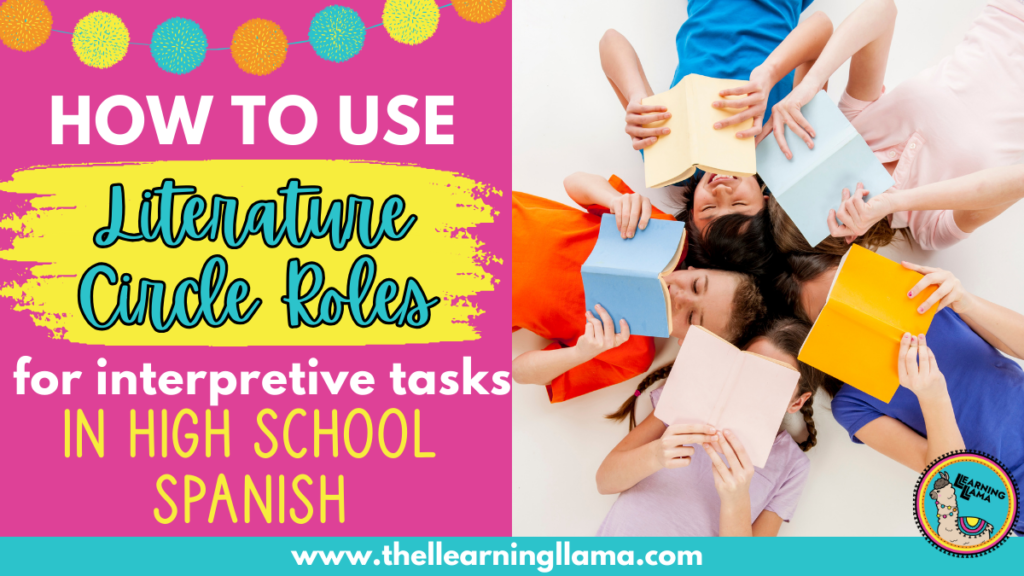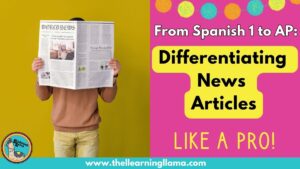When you hear the term literature circle roles, you probably immediately think of elementary school. But these reading roles can be used for any grade level and are amazing and useful tools to use in the world language classroom. You can use literature circle roles during interpretive tasks to keep all students accountable and to have strong collaboration during reading assignments.
My Spanish classroom was almost always set up so that students sat in groups of 3-5 students. I felt that since it is a language classroom, that set-up allowed for the most opportunity for authentic conversation. Students worked really well together and for the most part stayed in the target language.
So, when the time would come to read a text, I always encouraged the continued group effort that I saw every day. I would ask students to take turns reading aloud, to annotate, and to complete the comprehension questions together. Now, this would usually look like this: Students sat with their friends, so the stronger Spanish students would take the lead, answering questions and doing a majority of the work. The weaker Spanish students would just say they agree and copy down the same answers. I’m not saying this happened all of the time – but I’m sure you have seen it happen before, too!
How can we allow students to work in groups during reading tasks? We want them to work collaboratively, without a strong leader emerging and doing all of the work. This is where LITERATURE CIRCLE ROLES come into play. Once you implement reading roles, your students will be held accountable for their work. They will all be invested in the reading and be proud to accomplish an interpretive task that they previously might have just glossed over.
How do literature circle roles work?
The first step is to find your text. Once you determine the text and the genre, then you can decide which reading roles are best suited for that text type. Some roles lend themselves better to nonfiction vs. fiction. If you struggle to find authentic resources in Spanish, here is a list of ideas.
Then, you put your students into small groups. There is no specific number of students required, but you should determine which reading roles you will use, and then try to have each group with that number of students.
Next, each student is assigned their own specific role to complete during the interpretive task. Find out more about examples of roles below.
The students can read the text together, but as they read, each student is responsible for a different task. Now, your students are not simply copying off of one another, but each is completing their own work, with its own purpose. Here is a set of bilingual worksheets you can use to keep each student accountable.
Finally, students will share their work with the group, encouraging thoughtful conversation and analysis of the text.
9 Examples of Reading Roles
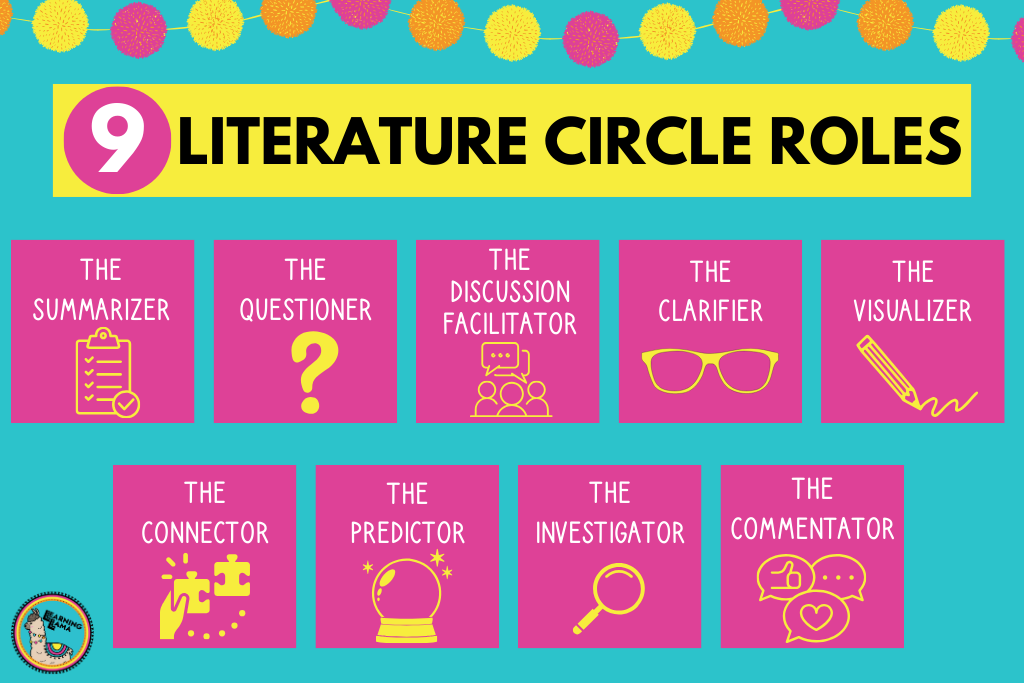
The Summarizer
In this role, the student is responsible for summarizing the main idea or plot of the text. I usually have them answer the main question: Who, what, where, when, why, and how.
The Questioner
The student in this role will come up with comprehension questions based on the text. They may also write questions to ask the group about areas of the text in which they need clarity on or help understanding.
The Discussion Facilitator
The discussion facilitator digs deeper than the questioner. This person writes post-reading discussion questions to promote lively discussion and insights. The questions should be open-ended and can even involve opinion.
The Clarifier
This student identifies any areas of difficulty within the text and prepares to explain them for their classmates. It may also include clarifying any new or challenging vocabulary terms.
The Visualizer
The visualizer is responsible for drawing a representation of the text. It could be one large image or maybe a series of icons, or even a symbol for each paragraph or sentence, depending on the length and genre of text.
The Connector
This student will make any connections between the text and either the real-world, other texts you have read, or class content.
The Predictor
This role works particularly well in short stories, especially when you are chunking the text and only reading part of the story. This student will make various predictions about what will happen, what will be said, or what a character will do.
The Investigator
This role includes doing some research where students may need to know some background information to better comprehend the text. This student may need to investigate historical, geographical, cultural, musical, or other information to share with the group.
The Commentator
The commentator locates passages that stand out as thought-provoking, funny, interesting, powerful, etc. Basically, they can use any of these annotation symbols (a freebie bookmark and poster is found here.)
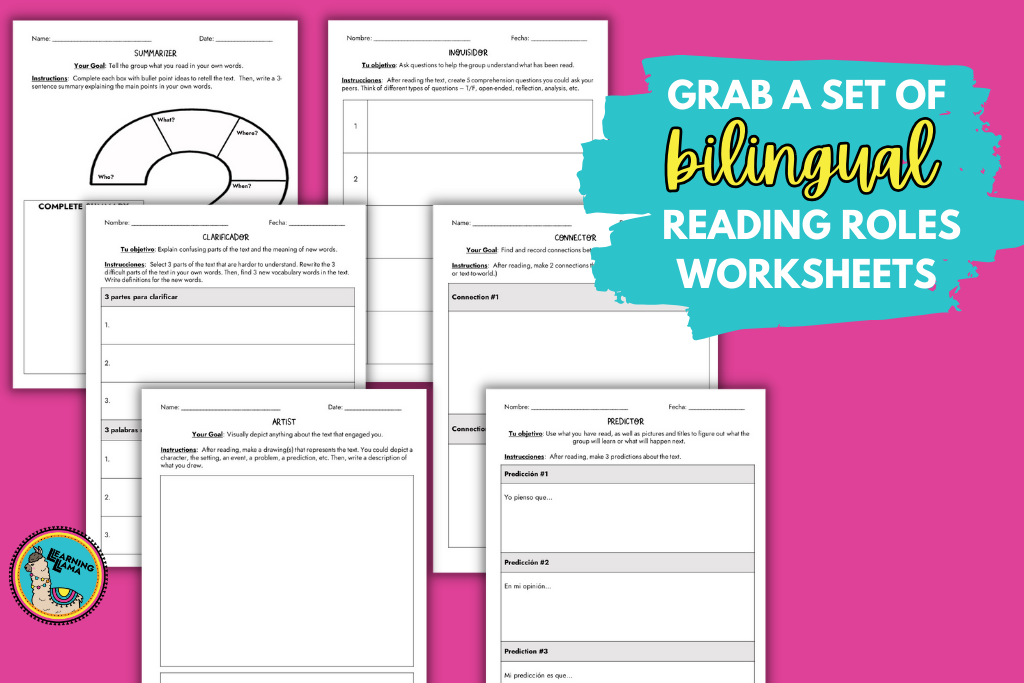
Who decides the roles?
You, as the teacher, may want to assign these roles. You know your students’ strengths and weaknesses. And, you know who can handle a challenge and who needs some practice forming questions.
However, there are times when you want to empower your students and let them choose their own roles. This requires some group discussion, as no two members should have the same role. Once students are in groups, tell them the roles and responsibilities, and let them discuss who should take on which role. Letting them have input in the role assigned will make them feel empowered in their task.
Tips for Using Reading Roles
No matter who assigns the roles, you want to clearly define the responsibilities. Each student should know exactly what is expected of them. For example, how many sentences should their prediction be or how many vocab words should they find and how do they define them? In the target language, with an image?
Consider rotating roles frequently. Don’t let students be stuck in the same role each time you do an interpretive task.
This is one of the best forms of differentiation! When you are getting observed by an administrator, use literature circle roles! Explain how each student is held accountable, and how they are all completing work independently, but collaborating to better analyze the text, and how you are differentiating to meet their needs! You’ll get an awesome observation score!
Provide sentence starters, especially in the target language. Students cannot be expected to take on a reading role without a little help. You may need to provide some useful sentence starters. Some great examples include: “Es interesante porque, Yo pienso, ¿Qué opinas de…”
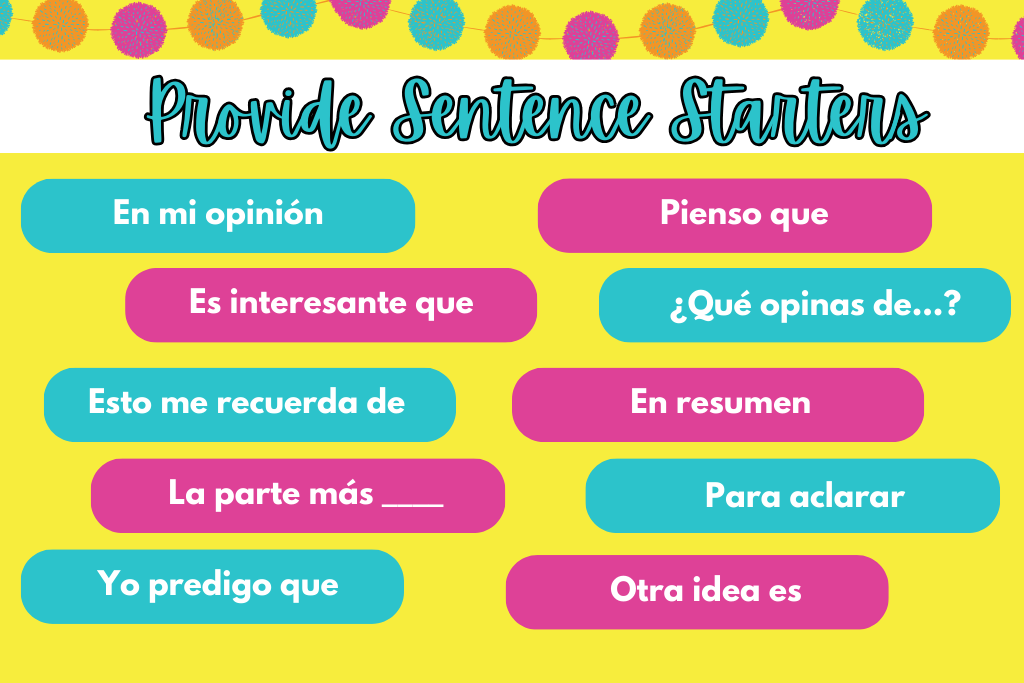
If you’re ready to introduce reading roles, grab a set of 6 worksheets in English and Spanish here. There are six roles included, each with graphic organizers to keep students on track and held accountable for their specific role.
And, if you are searching for interpretive task resources and other strategies, check out this blog post.

